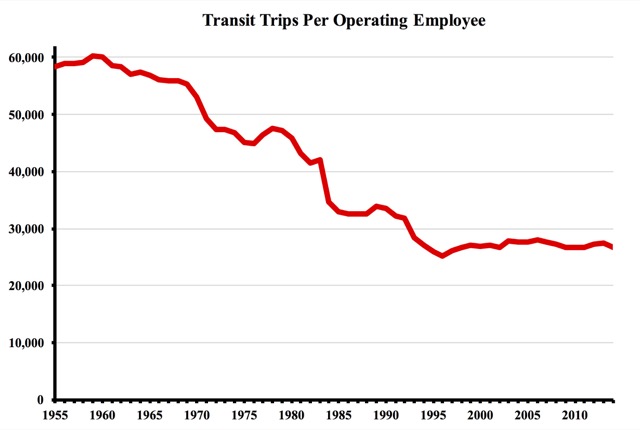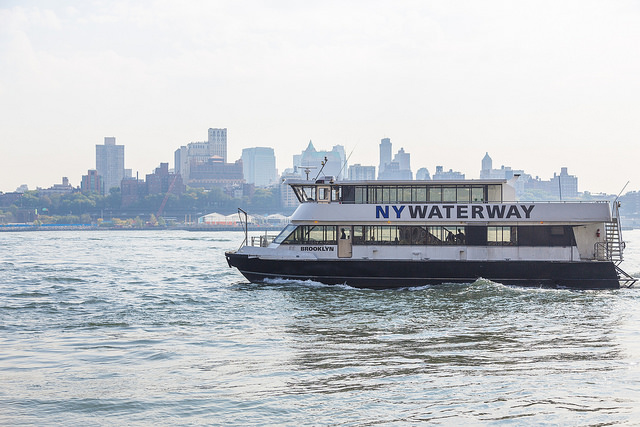The triumph of American industry has come from increasing productivity, particularly worker productivity. Since local governments took over private transit companies, however, worker productivity in the transit industry has collapsed.
As the figure above shows, transit companies in the 1950s carried about 60,000 transit riders per worker each year. As of 1960, just 12 of the nation’s hundred largest cities had taken over their transit systems. But after passage of the Urban Mass Transportation Act of 1964, cities quickly municipalized transit. By 1980, only New Orleans and Greensboro, NC, still had private transit and the number of riders carried per transit worker had fallen 25 percent. It continued to fall until stabilizing at around 27,000 trips per worker in the late 1990s. Continue reading









